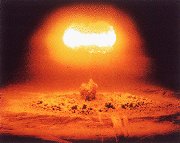
 The House Armed Services Committee Strategic Forces Subcommittee met on July 26 to hear testimony on plutonium disposition and the plans by the Department of Energy (DOE) to build a mixed oxide (MOX) fuel fabrication facility at Savannah River Site in South Carolina. For almost 5 years, DOE has proposed to build a MOX plant to convert weapons-grade plutonium into fuel that can be used in light water reactors to produce electricity.
The House Armed Services Committee Strategic Forces Subcommittee met on July 26 to hear testimony on plutonium disposition and the plans by the Department of Energy (DOE) to build a mixed oxide (MOX) fuel fabrication facility at Savannah River Site in South Carolina. For almost 5 years, DOE has proposed to build a MOX plant to convert weapons-grade plutonium into fuel that can be used in light water reactors to produce electricity.The design of the facility is now 85 percent complete. The total cost for design, construction and startup of the MOX facility is about $5 billion, of which about $800 million has already been spent. DOE plans to start construction this fall, the environmental impact statement has been approved, 73 acres of land have been cleared, 80 percent of the site has been excavated and DOE has authorization from the Nuclear Regulatory Commission to proceed.
In June 2000, the U.S. and Russia agreed to dispose of at least 34 metric tons of plutonium each beginning in 2007. Recently, the Russians informed the U.S. that they would move forward only if, 1) the plutonium fuel could be burned in new fast neutron reactors or 2) if the international community agreed to pay for the complementary MOX fuel project in Russia.
There are 4 huge benefits from the MOX process: 1) the U.S would eliminate the expense and risk of safeguarding and storing weapons-grade nuclear material, 2) Russia would diminish the risk that weapons-grade materials might fall into terrorist hands, 3) it degrades plutonium into elements that are no longer usable as warhead material, and 4) it extracts the energy potential from the surplus plutonium to provide the nuclear power industry with a new source of reactor fuel. AAEA supports the MOX process and facility.
No comments:
Post a Comment